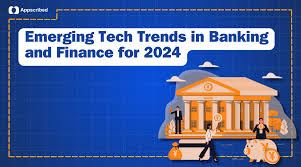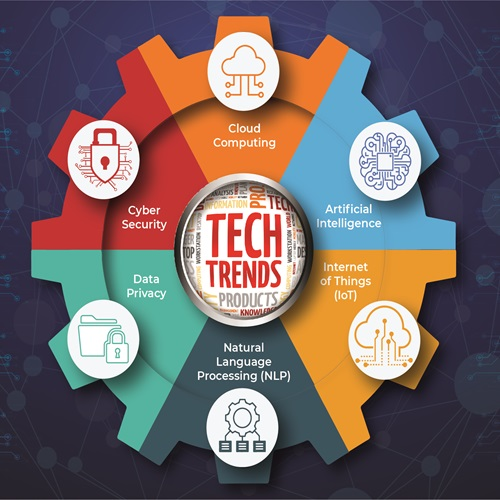101 Smart Types of Emerging Technologies in the Banking Sector in 2024
### Introduction
The banking sector is undergoing a profound transformation in 2024, driven by the rapid evolution of emerging technologies within fintech. These technologies are not only reshaping traditional banking practices but also revolutionizing how financial services are delivered and experienced by consumers and businesses alike. From artificial intelligence and blockchain to biometric authentication and decentralized finance, the landscape of banking is increasingly defined by innovation.
This document explores the impact of emerging technologies on the banking sector in 2024. We will examine the advantages they bring, such as enhanced efficiency, security, and customer experience, as well as the challenges they pose, including regulatory concerns and cybersecurity risks. By understanding these dynamics, stakeholders in the banking industry can better navigate the transformative opportunities and complexities presented by fintech innovations.
### Emerging Technology in the Banking Sector
Emerging technologies in the banking sector encompass a wide range of innovations that are shaping the future of finance:
- **Artificial Intelligence (AI)**: Powering chatbots, customer service automation, and predictive analytics.
- **Blockchain Technology**: Facilitating secure and transparent transactions, smart contracts, and decentralized finance (DeFi).
- **Biometric Authentication**: Enhancing security through fingerprint, facial, and voice recognition.
- **Internet of Things (IoT)**: Enabling connected devices for personalized banking experiences and real-time data monitoring.
- **Big Data Analytics**: Utilizing large datasets to drive insights for risk management, customer behavior analysis, and personalized services.
- **Regtech Solutions**: Streamlining regulatory compliance processes through automation and data analytics.
- **Robotic Process Automation (RPA)**: Automating routine tasks such as account maintenance and transaction processing.
- **Cybersecurity Solutions**: Protecting against evolving threats with advanced encryption, threat detection, and prevention technologies.
1. **Artificial Intelligence (AI)**
2. **Machine Learning (ML)**
3. **Blockchain Technology**
4. **Cryptocurrencies**
5. **Decentralized Finance (DeFi)**
6. **Robotic Process Automation (RPA)**
7. **Regtech Solutions**
8. **Biometric Authentication**
9. **Digital Identity Verification**
10. **Smart Contracts**
11. **Open Banking APIs**
12. **Internet of Things (IoT)**
13. **Quantum Computing**
14. **Predictive Analytics**
15. **Natural Language Processing (NLP)**
16. **Voice-Activated Banking**
17. **Facial Recognition Technology**
18. **Augmented Reality (AR)**
19. **Virtual Reality (VR)**
20. **Contactless Payments**
21. **Mobile Wallets**
22. **Wearable Payment Devices**
23. **Smart ATMs**
24. **AI-Driven Chatbots**
25. **Big Data Analytics**
26. **Cloud Computing**
27. **Edge Computing**
28. **Data Lakes**
29. **Digital Currencies by Central Banks (CBDCs)**
30. **5G Technology**
31. **Digital Signatures**
32. **Cybersecurity Solutions**
33. **Distributed Ledger Technology (DLT)**
34. **Microservices Architecture**
35. **Application Programming Interfaces (APIs)**
36. **Payment Gateways**
37. **Peer-to-Peer (P2P) Payments**
38. **AI for Fraud Detection**
39. **Automated Loan Underwriting**
40. **Digital KYC (Know Your Customer)**
41. **Robo-Advisors**
42. **Virtual Banking Assistants**
43. **Voice Biometrics**
44. **Neural Networks**
45. **Gamification in Banking**
46. **AI-Driven Risk Management**
47. **Fintech Sandboxes**
48. **Tokenization of Assets**
49. **AI for Credit Scoring**
50. **Automated Investment Platforms**
51. **Crowdfunding Platforms**
52. **Smart Branch Technology**
53. **Self-Service Kiosks**
54. **AI-Powered Personal Finance Management**
55. **Predictive Maintenance for ATMs**
56. **AI in Regulatory Compliance**
57. **Cross-Border Payment Solutions**
58. **AI for Market Analysis**
59. **Personalized Financial Products**
60. **Blockchain-Based Auditing**
61. **Remote Onboarding Solutions**
62. **AI-Driven Marketing**
63. **Digital Twin Technology**
64. **Energy-Efficient Data Centers**
65. **AI for Portfolio Management**
66. **Behavioral Biometrics**
67. **Real-Time Payment Systems**
68. **Green Banking Technologies**
69. **AI in Wealth Management**
70. **Blockchain for Supply Chain Finance**
71. **Enhanced Due Diligence Tools**
72. **Automated Savings Apps**
73. **AI for Sentiment Analysis**
74. **Virtual Reality for Customer Engagement**
75. **Digital Lending Platforms**
76. **Instant Loan Disbursement**
77. **AI for Transaction Monitoring**
78. **Blockchain for Trade Finance**
79. **Digital Receipt Management**
80. **AI in Financial Advisory**
81. **Blockchain for Real Estate Transactions**
82. **Voice Commerce**
83. **AI-Enhanced Customer Insights**
84. **Financial Inclusion Technologies**
85. **Blockchain for Voting Systems in Corporate Governance**
86. **AI for Customer Retention**
87. **Blockchain for Data Privacy**
88. **Hyper-Personalization**
89. **AI for Financial Forecasting**
90. **Blockchain for Cross-Industry Collaborations**
91. **AI-Driven Content Personalization**
92. **Fintech Ecosystems**
93. **AI for Stress Testing**
94. **Smart Grid Banking Solutions**
95. **Blockchain for Identity Management**
96. **AI for Tax Preparation**
97. **Virtual Branches**
98. **Predictive Customer Service**
99. **AI for Anti-Money Laundering (AML)**
100. **Quantum-Secure Encryption**
101. **Digital Transformation Platforms**
These technologies are reshaping the banking sector, enhancing efficiency, security, and customer experience. As we move further into 2024, staying abreast of these innovations is crucial for banks and financial institutions aiming to remain competitive and meet evolving customer expectations.
### Pros and Cons of Emerging Technologies in Banking
**Pros:**
- **Enhanced Efficiency**: Automation reduces operational costs and speeds up processes.
- **Improved Customer Experience**: Personalized services and faster transaction times.
- **Increased Security**: Advanced authentication methods and robust cybersecurity measures.
- **Financial Inclusion**: Extending services to underserved populations through digital channels.
- **Innovation**: Driving new product development and competitive differentiation.
**Cons:**
- **Cybersecurity Risks**: Vulnerabilities to cyberattacks and data breaches.
- **Regulatory Challenges**: Compliance with evolving regulations and legal frameworks.
- **Dependency on Technology**: Potential disruptions from system failures or technical glitches.
- **Skill Gaps**: Need for skilled personnel to manage and leverage emerging technologies.
- **Privacy Concerns**: Collection and use of sensitive customer data.
### Conclusion
As we navigate the landscape of 2024, the integration of emerging technologies in the banking sector represents both promise and challenge. Embracing these innovations can lead to greater efficiency, security, and customer satisfaction. However, stakeholders must remain vigilant in addressing risks and ensuring compliance with regulatory requirements. By leveraging the strengths of fintech, banks can position themselves at the forefront of industry transformation, delivering value-driven solutions that meet the evolving needs of a digital-first world.
### Thank You
Thank you for exploring the impact of emerging technologies on the banking sector in 2024. Embracing innovation while managing risks is key to shaping a sustainable and customer-centric future for banking.





